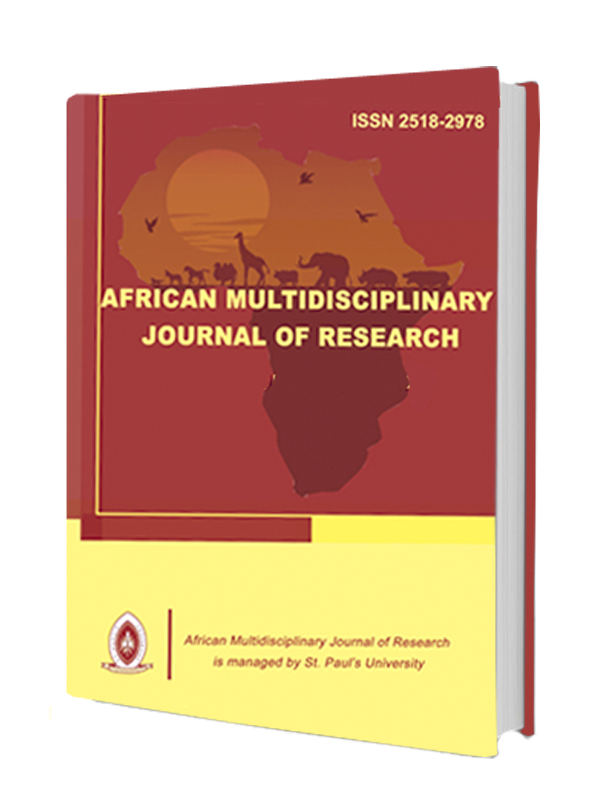PERCEPTIONS OF LECTURERS ON STUDENTS-COURSE EVALUATIONS IN UNIVERSITIES IN KENYA: A CASE STUDY OF KIBABII UNIVERSITY
##plugins.themes.academic_pro.article.main##
Abstract
The common approach method of evaluating instruction in higher education classes is to have students provide feedback on “effectiveness” of learning in a given period. Evaluations generally request specific feedback on measures of teaching effectiveness and on particular aspects of a course, as well as global rating questions. Countless myths and misperceptions regarding course evaluations exist and inevitably influence faculty, university administrators and students’ perceptions. In spite of solid research to counter these assumptions, such beliefs persist and continue to spread. The study was envisaged to focus on assessing lecturers’ perceptions on student-lecturer evaluations in universities. Its specific objectives were: to examine lecturers’ perception on students’ competence in evaluating their teaching effectiveness; to determine the influence of gender, experience, professionalism, departmental discussions and designation on lecturers’ perception of students’ competency in evaluating lecturers’ teaching effectiveness; and to examine lecturers’ perceptions on the formative and summative purpose of students in the evaluations. The study was conducted in Kibabii University and targeted all the teaching staff of the university. The study adopted a descriptive research design. The data was collected using a questionnaire that was validated and reliability of 0.917 attained. Data was analysed using both descriptive and inferential statistics. The results indicate that there was no significant difference between male and female lecturers about their perception on students’ evaluation. The study revealed that feedback on students’ evaluation helps lecturers to improve their teaching and interaction. The respondents disagreed that reports from the student evaluation be used for promotion and increment of their salary. The study concluded that inadequate instructional materials are among the key factors that affect the quality of teaching and learning. The study recommended that the university should provide adequate instructional materials to enhance a conducive environment for learning.
Keywords: Assessment, evaluation, quality, perception, course.
Keywords: Assessment, evaluation, quality, perception, course.
##plugins.themes.academic_pro.article.details##
How to Cite
Maiyo, J. K. (2022). PERCEPTIONS OF LECTURERS ON STUDENTS-COURSE EVALUATIONS IN UNIVERSITIES IN KENYA: A CASE STUDY OF KIBABII UNIVERSITY. African Multidisciplinary Journal of Research, 1(1). https://doi.org/10.71064/spu.amjr.1.1.69
References
- Clotflelter, C. T., Ladd, H. F., & Vigdor, J. L. (2007). How and why teacher credentials matter for student achievement. National Bureau of Economic Research Working Paper. 12828. Also available on the Caldercenter.org web site.
- Commission for University Education (CUE). (2014). Standards and Guidelines for University Libraries in Kenya.
- Nairobi: Commission for University Education.
- David, W., & Adebowale, A. (1997). Student evaluation of teaching effectiveness: A Nigerian investigation. Higher Education, 24(4) 453- 463.
- Ede, I. O. (2005). Lecturers’ perception of student evaluation in Nigerian universities. International Education Journal, 6(5) 619625.
- Farley, C. H. (1996). Confronting expectations: Women in the legal academy. Yale Journal of Law and Feminism,15(2) 40-47.
- Gardener, M., & Milton, B. (2002). Competent and the incompetent teacher. Journal of Education, 10: 5365.
- Germain, M. L., & Scandura, T. A. (2005). Grade inflation and student individual differences as systematic bias in faculty evaluations. Journal of Instructional Psychology, 32(1) 58-67.
- Gold. R. (2001). Evaluation of instruction. Educational Studies, 15(1), 31-42.
- Hayward, M. W., O'Brien, J., & Kerley, G. I. H. (2006). Carrying capacity of large African predators: Predictions and tests. Biol. Conserv. 139: 219-229.
- Lockheed, M. E., & Verspoor, A. (1991). Improving primary education in developing countries. Washington, D.C: Published for the World Bank, Oxford University Press.
- Machingambi, S., & Wadensanyo, N. (2011). University lecturers’ perception of evaluation of their instructional practices. Anthropologist 13 (3) 167-174.
- Menny, M. A. (2000). White Guy Habits in the Classroom. Men and Masculinities, 2, 4, 457-469.
- Mugenda, A., & Mugenda, O. (2003). Readings in research methods: Quantitative and qualitative approaches.
- Nairobi: African Centre for Technology Studies.
- Orodho, J. A. (2009). Elements of education and social science research methods. Maseno: Kanezja Publisher.
- Otunga, R. N. (1998). Foundation of adult education in Africa. South Africa: Pearson.
- Olatunji, T. (2013). The required dietary intake for all ages. Benin: Murphy International Publishers.
- Richardson, J. T. E. (2005). Instruments for obtaining student feedback: A review of the literature. Assessment and
- Evaluation in Higher Education, 30, 4, 387–415.
- Sass, T. R. (2007). The determinants of student achievement: Different estimates for different measures. Paper presented at the first annual CALDER research conference. Washington, D.C., October 4.
- Scriven, M. (1995). Student ratings offer useful input to teacher evaluations. Practical Assessment. Research and Evaluation, 4 (7).
- UNESCO. (2005). EFA Global Monitoring Report 2006. Education for all: Literacy for Life. Paris: UNESCO.

